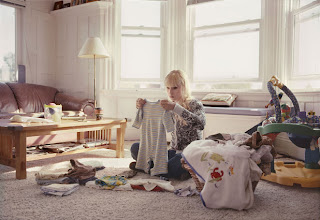As part of our homework for Photomedia, Luke asked us to develop a sort of low-key criteria on how to judge a picture. It is a difficult question to ask because photography is a part of art and as almost everyone knows, art is subjective. What one person may love, another may hate. The success of a painting or a photograph for that matter is based on crowd appeal.
For my first category, I would say that you could judge a photograph by what stands out from the others. Which one catches your eye first and which one holds your eye the longest?
Craftsmanship is another category I would consider when judging a photograph. How focused and clear is the image? Are there parts of a composition, unprofessional parts, that stick out like a sore thumb? Is it printed on high quality paper? How much pride is this photographer demonstrating through this one single photograph?
Subject matter is another category I'd go with. How does the subject matter interact with the rest of the composition? Is it interesting? Original? Does it convey a certain meaning? Mood? Message?
Luke also had us look up a series of photographs by Lewis Hine on American Suburb X: http://www.americansuburbx.com/series-2/l/lewis-hine-unfavorable-positions
Although there isn't much of an explanation to go along with these photographs, merely flipping through these images makes you uncomfortable (come on people, I know I'm not alone). Some make me cringe because I was caught off guard by the snagged fingernail or the crippled hand. Others portray topless women in unfavorable work environments (who sews without a shirt?). Of course, just like I was saying before, photographs are subjective and create different reactions among different people. However, with Hine's collection, I think it's almost a guaranteed unfavorable reaction.
The big question is, is this successful photography? In my opinion, I would agree. Although I'm still cringing a bit, Hine does his job in creating a reaction with his audience through subject matter ripe with shock value.
In addition to Hine, Luke also had us read an article by Lise Sfartee about her recent photography collection entitled "She": http://www.lisesarfati.com/04articlesandessays/articles-and-essays.shtml
Sfarte, according to her writing, believes that documentary photography is the only type that accurately keeps of record of the real world. In her "She" collection, Sfarte creates a photographic narrative that blends photography, theme, and viewer to create an overall engaging experience. The subject matter for her photographs is her family; her mother and four sisters. Through them, Sfarte engages the view by successfully articulating history, feelings, and ghosts. Through her subject's refusal and resistance to getting their photograph taken, Sfarte creates an element of attraction for the viewer.
We were also to go back to American Suburb X and find a picture that interests you. Although the post I made about the American tourists was pretty interesting, I chose a different photograph, this time, thanks to William Klein. Pictures that tell a story are the ones that I deem the most successful. When I first looked at this, I started to form a story in my head. Photography means painting with light but I also think it can mean storytelling with light. And that's exactly what Klein is doing in "Anthony Lane on William Klein."









No comments:
Post a Comment